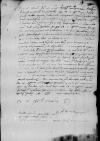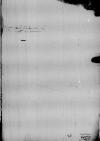List #1872
Ioannes DANTISCUS do Tiedemann GIESEAllenstein (Olsztyn), 1538-07-13
Regest polski:
Dantyszek cieszy się z listu Giesego i z jego dobrego zdrowia.
Poprzedniego dnia pisał w skrócie z Olsztynka (Hohenstein), jak się mają ich wspólne sprawy; radzi Giesemu być dobrej myśli – kiedy wreszcie nadejdą bulle, wrogowie będą mieć raczej powody do ubolewania niż do radości. Dantyszek obiecuje działać w porozumieniu z Giesem i nie zaniedbać niczego, co posłuży szybszej konfirmacji Giesego. Zapewnia Giesego o swojej przyjaźni i życzliwości.
By nie trudzić więcej siebie i koni, spośród których wiele musiał pozostawić po drodze, zatrzymał się w Olsztynie u prepozyta [Pawła Snopka?], ten zaś przyjął go bardzo życzliwie.
Dantyszek żartem domaga się podania ceny otrzymanego prezentu.
Wysyła Giesemu projekt reformy Kościoła autorstwa pewnych kardynałów wraz z komentarzem pewnego Luteranina [Johannesa Sturma]. Prosi o odesłanie tekstu przy sposobności.
Rękopiśmienne podstawy źródłowe:
Publikacje:
| ||||||
Tekst + aparat krytyczny + komentarzZwykły tekstTekst + komentarzTekst + aparat krytyczny
Reverendissimo Domino
Reverendissime Domine, frater et amice carissime ac honoran(de) or honoran(dissime)⌈honoran(de)honoran(de) or honoran(dissime)⌉.
Salutem fraternique amoris commendationem.
Quod Dominatio Vestra Reverendissima me cf.
1538-07-12⌊Heri1538-07-12⌋ ex
De me, quod coepit, indies sibi firmius persuadeat in amando Dominatione Vestra Reverendissima me cessurum nemini. In iis paulopost diffusius a me scribetur Dominationi Vestrae Reverendissimae. Quam diutissime optime valere cupio ex animo.
Venerabilis dominus hic probably
De munere mihi donato velim mihi Dominatio Vestra Reverendissima numera written over ...⌈... illegible⌈...... illegible⌉aa written over ...⌉ret pretium, quod fratri meo
Dominationem Vestram Reverendissimam iterum felicissime valere precor et opto.
Ex
Dominationis Vestrae Reverendissimae frater integerrimus,
Postscript:
Mitto „Consilium quorundam cardinalium de reformanda ecclesia” et


 BCz, 245, p. 42
BCz, 245, p. 42